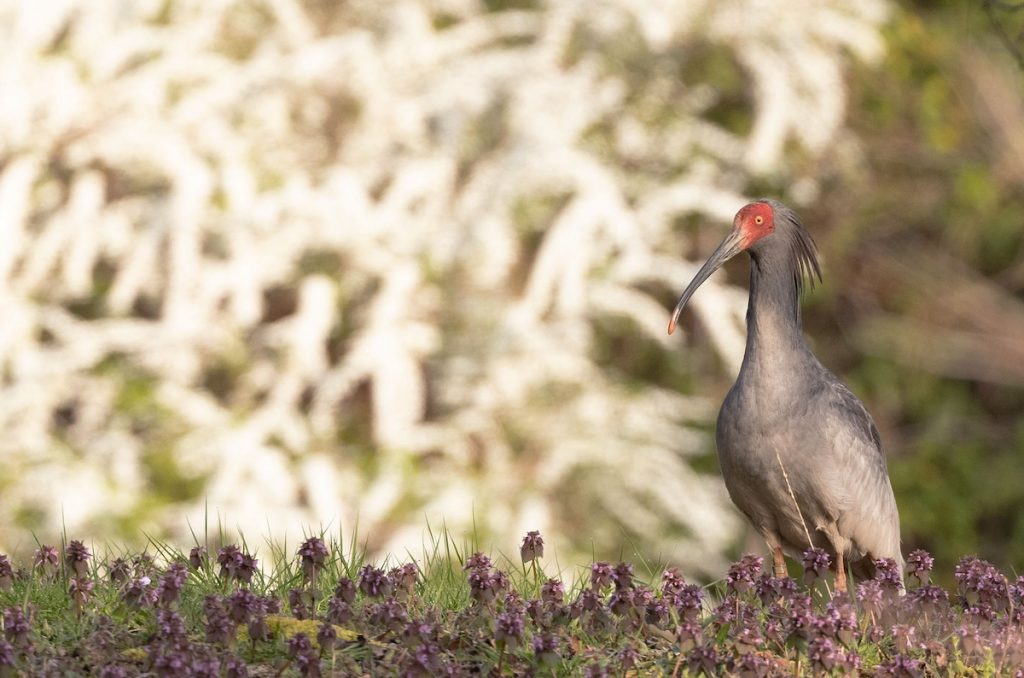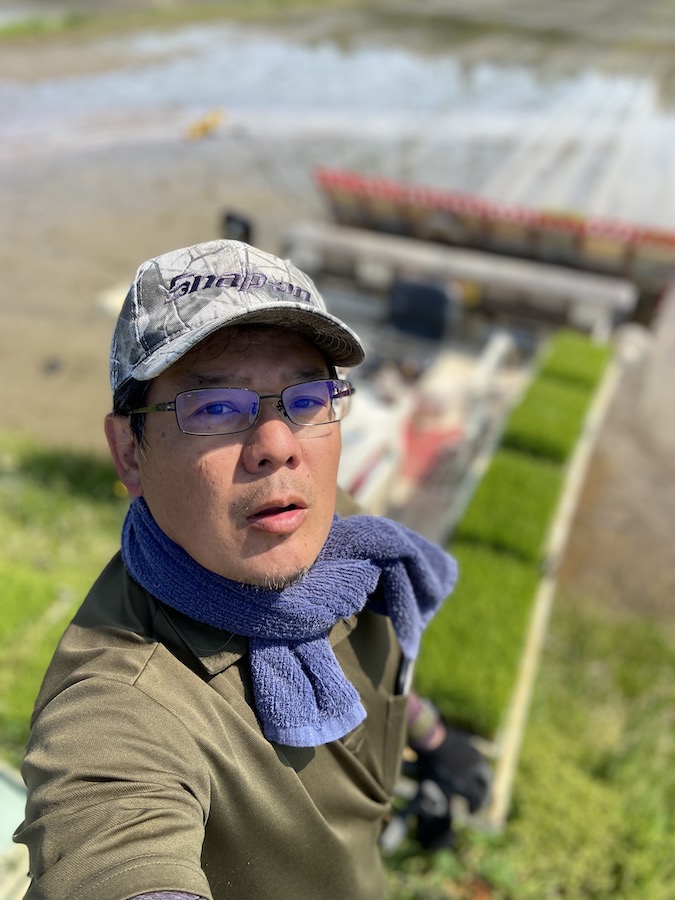
A crested ibis with a branch in its beak flies against a backdrop of cherry blossoms in full bloom. (©Fumie Oyama)
Read the full story on Japan 2 Earth - Sado Wildlife in Focus | First Crested Ibis Nest Confirmed as Spring Arrives in Full Bloom
Spring has arrived on Sado Island in the Sea of Japan. Crested ibis continue to diligently transport branches and twigs to build their nests. On March 21, the Ministry of the Environment's Sado Nature Conservation Office made an announcement. They confirmed the first successful nesting and incubation of the season.
Preparing the Nest
Warm days continue on Sado as people busily prepare for the rice planting season. The crested ibis are likewise tirelessly engaged in nest-building in preparation for laying eggs and hatching their young.
On March 21, an ibis couple consisting of a 7-year-old male and a 6-year-old female were observed nesting high in a tree. According to the Sado Nature Conservation Office, one of the birds appeared to be incubating its eggs.

Incubation for the crested ibis lasts about one month. If all goes well and the eggs do not fall prey to crows or martens, the chicks will hatch. But we humans cannot intervene in this process, so we must leave it up to Mother Nature.
Continue reading the full story on Japan 2 Earth to view more stunning photos of the endangered crested ibis against a backdrop of spring flowers.
And find more great articles on the environment and the challenges of achieving the SDGs on our affiliated website Japan 2 Earth (J2E), sparking a transition to a sustainable future.
RELATED:
- Sado Wildlife in Focus | Is Overcrowding Responsible for the Recent Decline in Crested Ibis Numbers?
- The Snow Fairy of Hokkaido is Winter's Sweetest Gift
- Protecting the Vulnerable Little Tern is No Simple Matter
(Read the article in Japanese.)
Author: Fumie Oyama
Click here to read more Sado Wildlife in Focus photo essays by photojournalist Fumie Oyama.

Fumie Oyama is a two-time winner of the Japan Newspaper Publishers & Editors Association Award as a photographer for the Sankei Shimbun. After covering the reintroduction of the crested ibis to the wild for 11 years, Oyama left the company in 2020 to move to Sado Island. There, he continues to photograph the ibis and other wildlife while engaging in farming. He currently promotes the charms of Sado Island as a photojournalist. Follow Fumie Oyama on Instagram.








